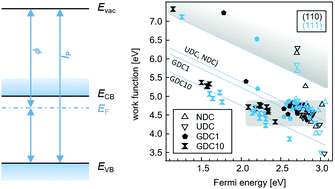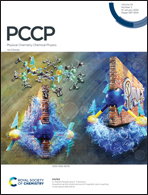Surface potentials of acceptor- and donor-doped CeO2 thin films and their relation to oxygen surface exchange
Abstract
Surface Fermi level positions, ionisation potentials, and work functions of acceptor-, donor-, and nominally undoped CeO2 have been determined by means of in situ photoelectron spectroscopy on films grown with different surface orientation and preparation conditions. The Fermi energy varies in accordance with the doping and oxygen activity. The ionisation potentials are largely unaffected by the preparation conditions and surface orientation. They are comparable for nominally undoped, 1% donor-doped, and 1% acceptor-doped films. The majority of the 10% Gd-doped films exhibit a 0.5 eV lower ionisation potential, which might be related to the presence of a surface space-charge region. The lower ionisation potential of the 10% Gd-doped films compensates for their lower Fermi energies and eventually results in work functions being largely independent on doping. Oxygen surface exchange coefficients determined using secondary ion mass spectrometry and conductivity relaxation experiments reveal similar magnitudes and are not strongly affected by doping type, concentration, and surface orientation. The results indicate that surface space-charge regions are crucial for oxygen surface exchange but do not allow to finally identify the rate determining step for oxygen incorporation into CeO2-based materials.



 Please wait while we load your content...
Please wait while we load your content...